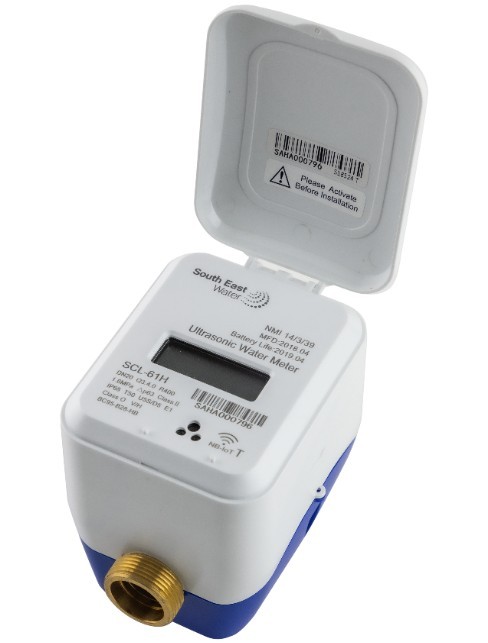Digital Meter Technology
Creating an intelligent water network for the future.
About digital water meters
The meters use cellular Internet-of-things (IoT) global standards which is based on something called long term evolution (LTE) technology. This is wireless communication for mobiles and data terminals. They transmit their data using existing telecommunications mobile towers.
The types of meters we’re installing use an ultrasonic mechanism to measure the flow, and are fully integrated with the communications technology in a single enclosure.
The initial meters we’ll install will be for 20mm size services, with larger meters to follow.
Safety of digital water meters
Digital water meters are safe. They only transmit data for around 60 seconds each day. Outside of that, they don’t continually transmit or activate radioactivity. The transmission power is well within the Australian Media and Communication Authority (ACMA) requirements.
The data sent from digital water meters uses low level radiofrequency (RF) waves, a form of electromagnetic energy present all around us from natural and man-made sources.
Where our digital water meteres are made
The meters are manufactured in China and must meet all relevant Australian standards.
Battery life of digital water meters
The digital meter has an expected battery life of 10–15 years. This will vary depending on the location and the number of configuration updates we have made. The meter is a sealed unit and the battery cannot be recharged or replaced.

Frequently Asked Questions
Every digital meter is linked to a telecommunications network. This network is used to send the data back to us. Water usage data is transferred by the telecommunications carrier to our secure platform. The digital meters are regulated by ACMA.
The digital water meters use secure, existing telecommunication infrastructure to send your usage data securely to our servers and systems. The data doesn’t contain any identifying information about you, and uses global standards to make sure the data is secure end-to-end.
We have the highest standards to safeguard your information. Anything we collect we make sure that, as per our usual practice, it’s collected, used, handled and stored in accordance with our privacy policy, which strictly complies with the Privacy and Data Protection Act 2014. More information is available in our privacy charter.
Only you as the account holder and our employees/contractors who are here to help you with your account can access your water usage data. You can access your account via our customer portal mySouthEastWater.
If you’re a tenant, your tenant, landlord or property manager won’t be able to see your water usage, or any usage during the time of your occupancy.
The ability to transmit water meter data means access to more readings, more frequently. This will offer greater insight and timely information about water use and water loss in the water network and at your property. This will help you and us to take action and repair leaks.
During our trial, the digital meters will only transmit data once a day for around 60 seconds. The meters are estimated to emit approximately 0.2 watts compared to a mobile phone which can emit up to 6 watts. The meters and communications technologies we’re trialling are also likely to produce less than a twentieth of the radiofrequency power measured from a digital electricity smart meter, and transmit information at much lower energy levels (e.g. 200mw compared to 1,000mw).
The data is a number (in litres) that is read from your water meter. It tells us the volume of water going through the water meter. This data is read and logged by your meter every 30 minutes, but the digital meters will only transmit this data once a day for around 60 seconds.
We take your privacy very seriously. We manage your information in accordance with the Privacy and Data Protection Act 2014. No personal information is stored on the digital metering device.
Digital meters are a technology upgrade to the existing mechanical meters that have been used to bill customers for decades. New digital meters serve the same key purpose as existing meters, which is to measure water how much water you use and create a bill for these services. In addition to measuring how much water you use, the technology in digital meters allows us to collect usage, network and performance data which we use to:
detect leaks and identify unusual usage patterns sooner;
make sure your meter is working properly; and
monitor what’s happening in the network, including water temperature, water pressure, signal strength and tamper alarms, so that we can operate our assets more efficiently and sustainably
The data we collect from digital meters may be shared with property owners, occupiers and contractors or third parties for these purposes (including, for example, to perform network analytics, research and other water or resource saving activities). Sometimes the data we collect from digital meters contains information about an individual. When it does, we treat the data as personal information and handle it in line with our Privacy Charter.